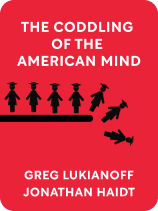

This article is an excerpt from the Shortform book guide to "The Coddling of the American Mind" by Greg Lukianoff and Jonathan Haidt. Shortform has the world's best summaries and analyses of books you should be reading.
Like this article? Sign up for a free trial here .
How did colleges start running like businesses rather than educational institutions? What impact has this had on the students?
These days, colleges are run more like big businesses than educational institutions. This is because education is so profitable that the administrators started looking at students as customers and valuable assets that need to be catered to or they’ll lose money.
Keep reading to learn why college is a business and students are merely customers.
College as Big Business
While most American colleges and universities are still nonprofit organizations, they have nevertheless become enormously wealthy institutions. In just the 2015-2016 academic year, university revenues totaled a whopping $548 billion.
Because college is a business, universities now require a large, professionalized bureaucracy of administrators to manage them. Often, these administrators are tasked with financially safeguarding the university—successfully marketing it to prospective students, securing large gifts from alumni, and shielding the university from potentially ruinous lawsuits.
The administrators make their living from the university’s largesse, and so have a direct personal interest in ensuring its revenue-maximizing potential. The past few decades have seen the numbers of university administrators skyrocket, with their growth in numbers far outpacing that of professors. These administrators are now the real power players and decision-makers on matters of campus policy—not the professors.
Students as Customers
If American universities are revenue generators, then the source of that revenue is the students themselves. Colleges increasingly see students as customers—valuable assets whose needs must be catered to, lest they (or, more realistically, their parents) leave and give their valuable tuition money to a competing institution.
Privileged students know that their families are the financial lifeblood of the university, and as such, have come to demand white-glove treatment from the adults who run the campuses. Colleges now resemble luxury resorts, where students dine on excellent food and enjoy first-class amenities in their classrooms and residence halls.
It is not surprising, therefore, that students have developed a sense of entitlement regarding how they deserve to be treated—and what opinions and ideas are acceptable for them to be exposed to. For many students, professors and administrators are simply customer service representatives.

———End of Preview———
Like what you just read? Read the rest of the world's best book summary and analysis of Greg Lukianoff and Jonathan Haidt's "The Coddling of the American Mind" at Shortform .
Here's what you'll find in our full The Coddling of the American Mind summary :
- The "three Untruths" that have taken hold of young people
- The damage that "speech codes" cause on college campuses
- How colleges are increasingly seeing students as customers






